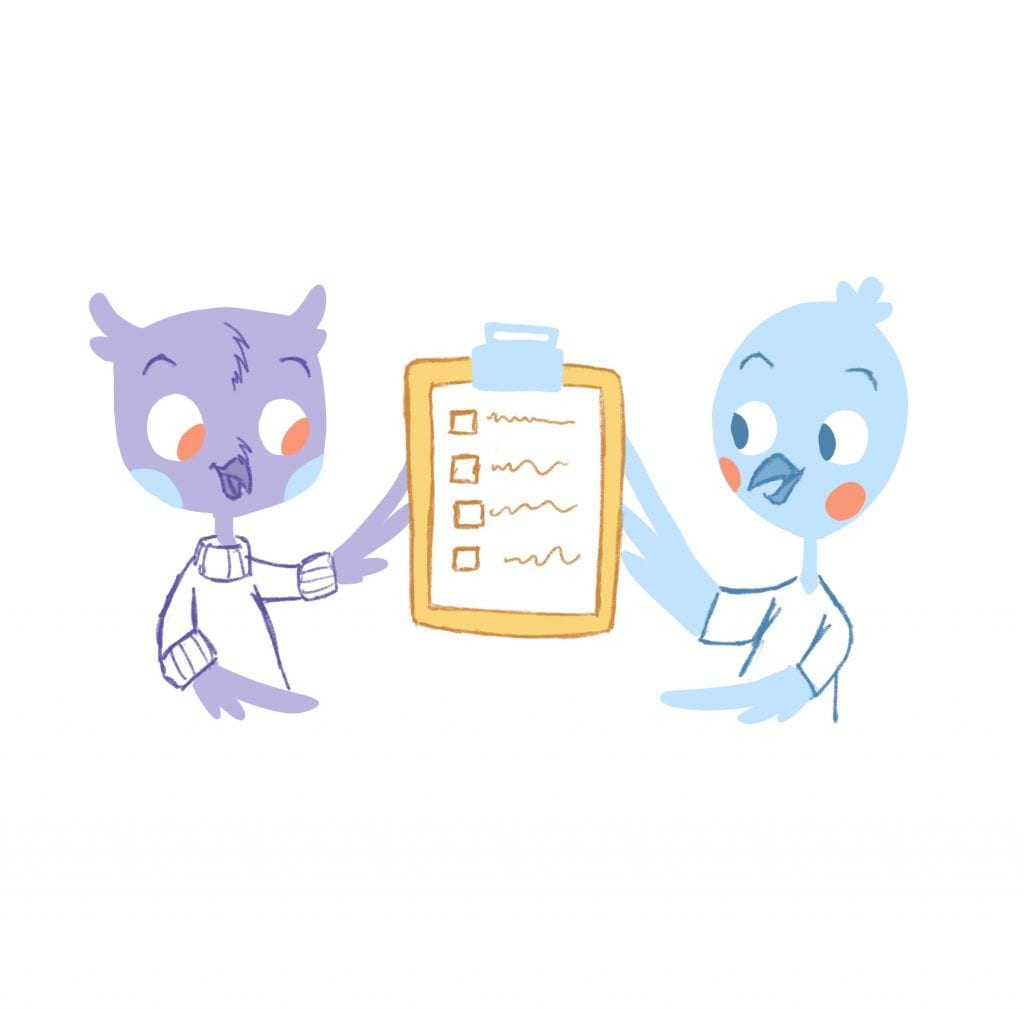

Despite being an essential part of work life, meetings can also be time-consuming. In fact, Atlassian found that employees spend 31 hours a month in unproductive meetings. That’s a lot of time that isn’t being utilized for productive purposes. No wonder meetings are often described as the number one productivity killer.
However, if you are trying to make meetings shorter and sharper, you are in the right place. Here are 12 tips to make your meetings more productive and efficient.
1. Set a clear agenda and share it with attendees in advance.
One of the best ways to keep a meeting on track? Have a clear agenda before it starts. By doing so, you’ll stay focused on the topics that need to be addressed, as well as avoid getting sidetracked.
To create an agenda, consider the meeting’s goals and the tasks that need to be accomplished. Next, determine what topics must be discussed to achieve those objectives.
To ensure that an agenda is effective, be sure to share it with all attendees before the meeting. This will give attendees a chance to prepare.
2. Limit the number of attendees to only those who are essential to the discussion.
When setting up a meeting, it can be tempting to invite everyone. A lack of focus can result in asking too many people and causing sidebar conversations. Be sure to invite only those who absolutely need to attend. As a result, the meeting will be more productive and focused.
It has been found that meetings should be between 3 and 8 participants in size.
Whenever you are unsure who needs to attend a meeting, ask yourself: “Who needs to make a decision, provide input, or take action?” If someone does not meet one of those criteria, they probably shouldn’t attend.
Is it possible to inform people about the meeting’s outcome despite having them not present? Absolutely. Follow up with them via email or Slack.
3. Start and end the meeting on time.
It is also essential to start and end the meeting on time. When you do this, you show that you respect everyone’s time and are serious about your work.
In case of a late arrival, let the attendees know as soon as possible. Try to wrap up the meeting as quickly as possible by focusing on the most critical points if the meeting is over time.
4. Implement the “15-minute meeting.”
In July 2021, Berlin-based financial automation company Monite introduced its “15-minute meeting” rule, which limits managers’ team meetings by a quarter-hour.
SHRM points out that the 15-minute meeting curbs employee burnout and boosts engagement, two factors with which many companies have struggled since embracing hybrid or fully remote work arrangements in response to the pandemic.
“Fifteen-minute meetings are prime sources of efficiency,” says Dannie Lynn Fountain, a Google talent source and founder of Focused on People, a human resource services company in Seattle. According to research, 65 percent of U.S. employees spend 24 billion hours a year in unproductive meetings, which inhibit their own work.
For a 15-minute meeting, Angela Druckman, founder of The Druckman Co., offers these tips:
- Know what you want to accomplish before the meeting.
- Ensure that conversations are meaningful but brief.
- Don’t engage in tangential conversations.
5. Encourage everyone to participate.
It is possible to achieve this by asking open-ended questions, inviting participants to share their ideas, and respecting everyone’s opinions. In case one or two people dominate the conversation, redirect it to others.
One way to encourage participation is to let participants share their ideas and thoughts and be open to feedback.
6. Stay focused on the agenda.
Meetings can easily get sidetracked, but keeping them on track is key. Politely bring the conversation back to the agenda if someone starts going off on a tangent.
Timekeeping techniques can also be used to keep the meeting on schedule. You can, for example, set a timer for every item on the agenda.
Whenever the discussion drifts off topic, gently bring it back on track. Also, you might consider splitting the meeting into two or more shorter ones if you have a lot of items to discuss.
7. Take breaks.
Take breaks every 20-30 minutes if you are having a long meeting. Everyone will be able to stay focused and engaged as a result.
8. Tap into the power of AI.
By helping manage the “digital debt” of emails, meetings, and notifications that hold innovation back, AI can ease the burden of work, according to Microsoft’s Work Trend Index Annual Report.
“This new generation of AI will remove the drudgery of work and unleash creativity,” said Satya Nadella, Chairman and CEO of Microsoft. “There’s an enormous opportunity for AI-powered tools to help alleviate digital debt, build AI aptitude, and empower employees.”
There are several ways in which artificial intelligence can help with meetings, including:
- Time management. With AI, meeting times can be clearly defined, and time spent on agenda items can be tracked.
- Scheduling. Scheduling can be simplified with artificial intelligence.
- Recording and transcribing. AI can record and transcribe notes from meetings.
- AI writing tools. To help you make your own notes, AI can provide templates and writing tools.
- Summarizing. AI can summarize transcripts, summarize key insights, and generate action items from them.
- Scheduling follow-up meetings. Follow-up meetings can be scheduled automatically by AI.
- Drafting emails. Based on meeting items, AI can draft emails.
9. Summarize the key takeaways and next steps at the end of the meeting.
As a result, everyone will be on the same page and will know what to do next.
10. Use a meeting management tool.
You can stay organized and on track by using a meeting management tool. In addition to taking notes, tracking action items, and sending follow-up emails can also be used to take action on tasks.
11. Get feedback from attendees.
Request feedback from attendees after each meeting on how it can be improved. By doing so, you will be able to identify areas for improvement.
12. Be willing to cancel unnecessary meetings.
It’s okay to cancel a meeting if you realize it’s unnecessary. By doing so, everyone will have more time for other activities.
To reduce unnecessary meetings, here are some alternatives:
- Rather than holding weekly meetings, try biweekly or monthly meetings.
- To minimize travel time, consider using a video conferencing platform.
- You might consider sending an email instead of a meeting if it does not require much discussion.
In order to make your meetings more effective, here are some additional tips:
- Establish ground rules. You should establish some ground rules at the beginning of the meeting, such as remaining on topic, respecting people’s time, and avoiding distractions.
- Use a timer. Ensure you track the time for each item on the agenda. It will keep you on track and prevent you from getting off track.
- Make decisions. Almost all meetings aim to reach decisions. If your decisions aren’t perfect, don’t be afraid to make them. In order to make quick and efficient decisions in a meeting that requires decision-making, ensure you gather all of the necessary information in advance.
- Follow up after the meeting. You should send all participants a summary of what was discussed and what they need to do next after the meeting. As a result, everyone will be on the same page, and progress will be made.
Following these tips, Your meetings can be shorter, sharper, and more productive.
FAQs
Why is it important to have shorter, sharper meetings?
Meetings that are shorter and sharper have many benefits, including:
- Increased productivity. When employees are constantly in meetings, they have less time to do their actual work. Having shorter meetings allows employees to focus on their individual tasks and be more productive.
- Improved focus and engagement. The attention span of an individual is only so long, especially in a meeting setting. The shorter the meeting, the more engaged and focused the attendees will be.
- Reduced decision fatigue. Decision-making can be exhausting, especially if you have to do it multiple times a day. Shortening meetings reduces decision fatigue, and decisions are made faster and more efficiently.
- Better use of time. With shorter meetings, everyone can get their point across without wasting too much time. For teams with members who have different schedules or time zones, this is particularly important.
What are some challenges of having shorter, sharper meetings?
There are several challenges associated with shorter, sharper meetings, including:
- Getting everyone on board. Everyone may not be convinced of the benefits of shorter meetings right away. Your team needs to be patient and explain the benefits.
- Staying on track. The pace of a short meeting can be challenging. Make sure your agenda is clear and adhere to it.
- Making decisions quickly. In group settings, it can be difficult to make quick decisions. Encourage everyone to share their ideas and participate.
- Getting things done. Getting everything done in a short meeting can be challenging. It’s important to prioritize and address the most important stuff first.
How can these challenges be overcome?
To overcome the challenges of shorter, sharper meetings, here are some tips:
- Preparation is key. Make sure you have a clear agenda and all of the necessary materials ready for the meeting. As a result, the meeting will stay on schedule.
- Be flexible. Be prepared to adjust the agenda if things don’t go as planned.
- Respect one another. Respect everyone’s contributions and opinions, as their time is valuable.
- You need to be decisive. Don’t be afraid to make it even if it isn’t the most popular decision.
- Assert yourself. When dealing with difficult participants, don’t be afraid to assert yourself. Communication must be direct and clear, and boundaries must be set.
How can I transition to a culture of shorter, sharper meetings?
- Start small. Make small changes at a time rather than trying to change everything at once. You can start by shortening your meetings by 15 minutes or 30 minutes. Eventually, you can shorten meetings even more once you have adjusted to them.
- Get buy-in from your team. Get your team’s buy-in on shorter, sharper meetings by explaining their benefits Explaining their benefits increases their likelihood of favoring the change.
- Be flexible. It may be necessary to have longer meetings at times. Try, however, to make this a rare occurrence rather than the norm.
Image Credit: Christina Morillo; Pexels; Thank you!











John Hall
John Hall is the co-founder of Calendar a scheduling and time management app. He’s also a keynote speaker that you can book at http://www.johnhallspeaking.com.